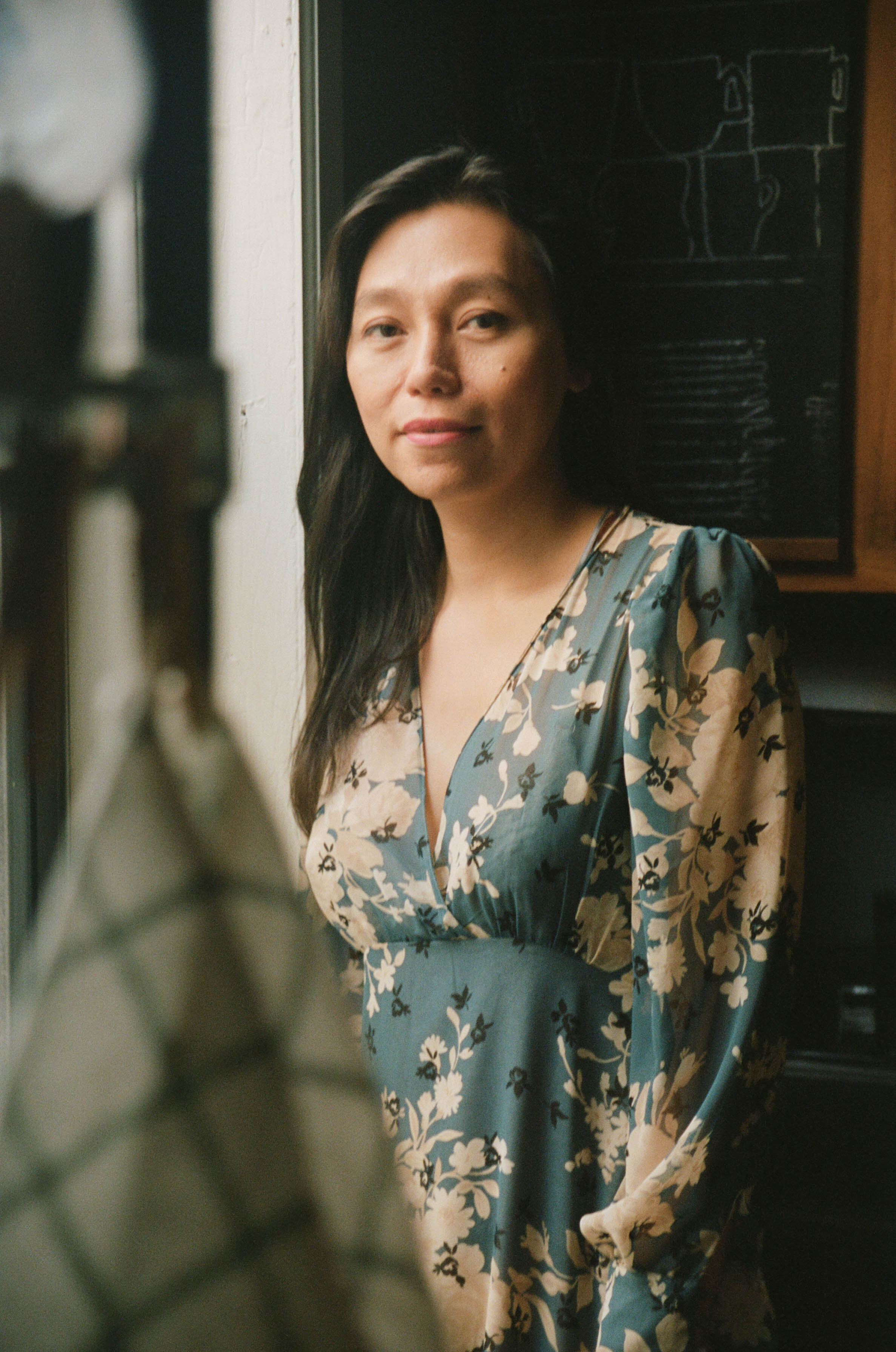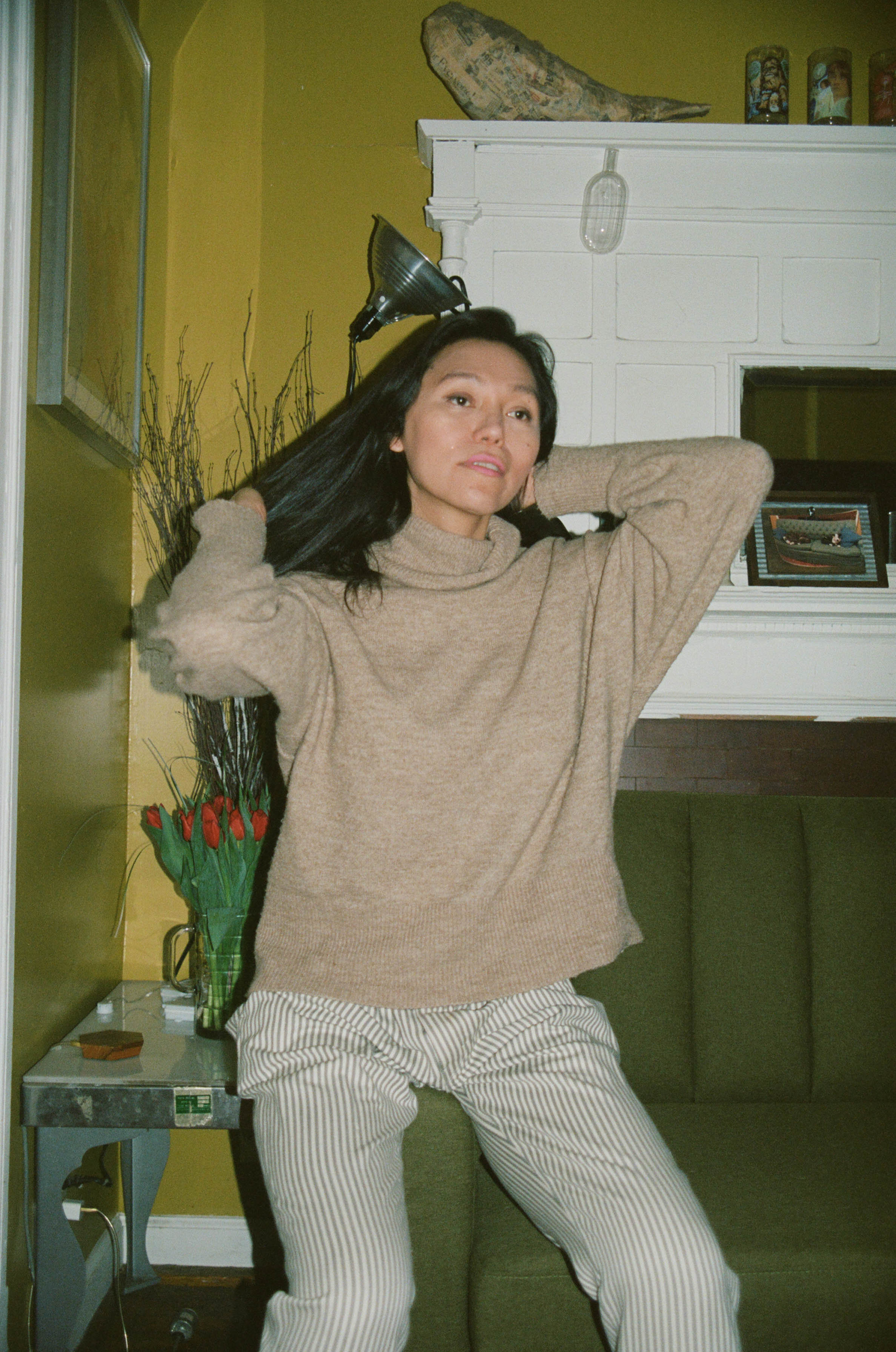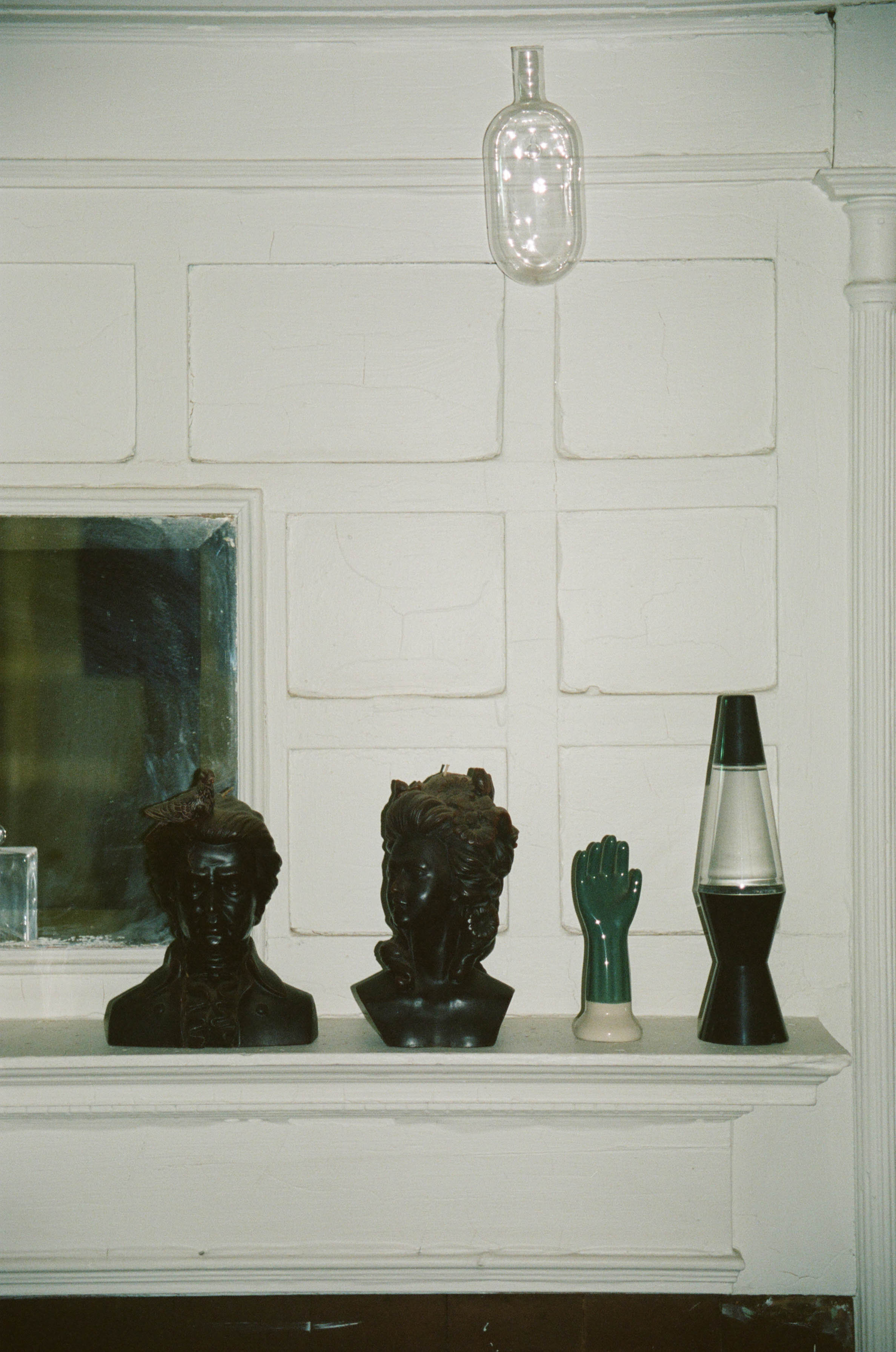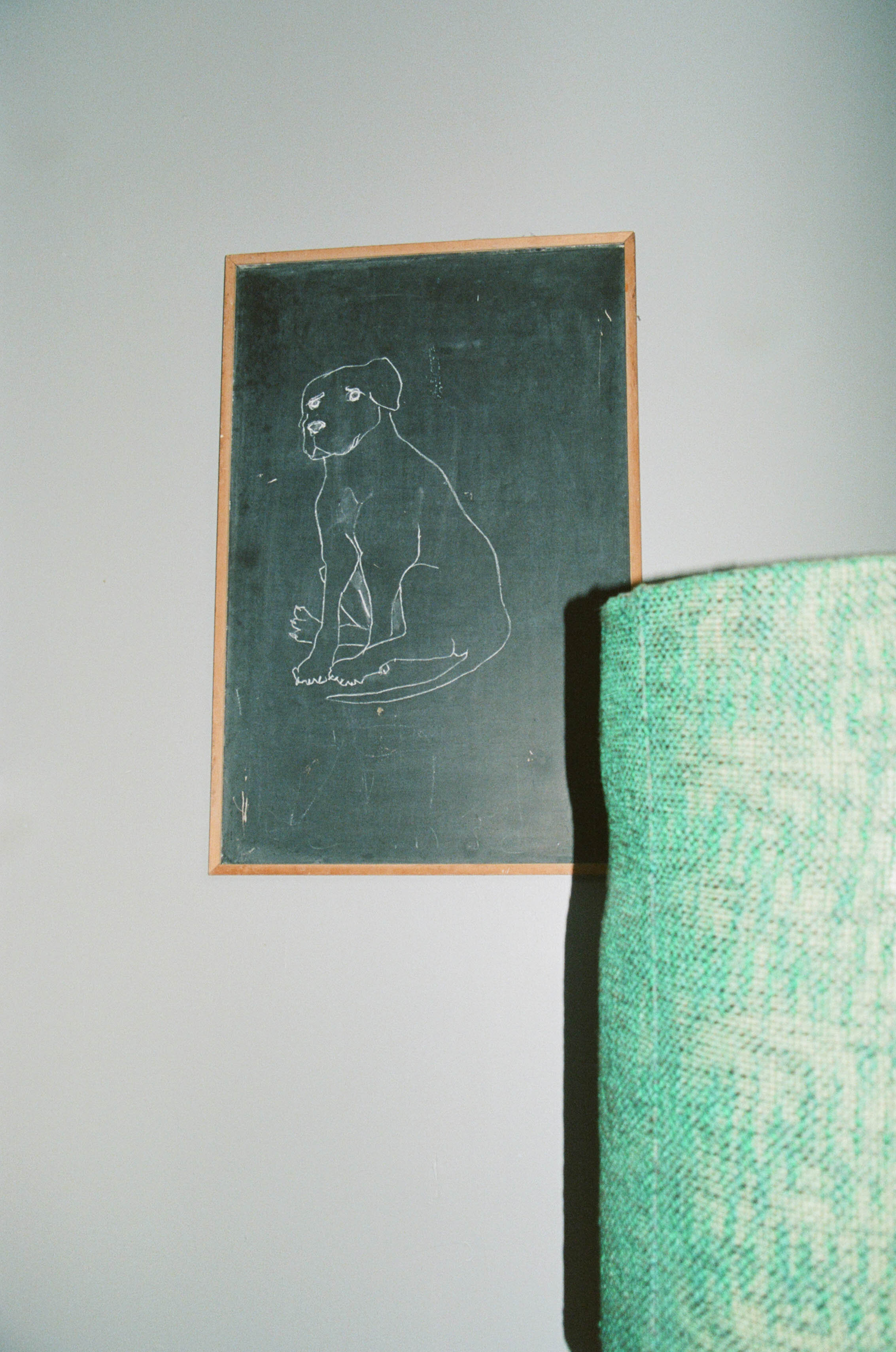A groundbreaking trans filmmaker and actor whose work has screened around the world, Isabel is working on her third feature following the success of 2019 film Lingua Franca.
♫ Listen to Isabel's playlist | ⌨ isabel’s LAST GOOGLE SEARCH
on her morning routine
I wash my face, have breakfast, make coffee and sit down at my dining room to write.
on growing up in the Philippines and falling in love with New York
I was born and raised in Cebu, the second-largest city in the Philippines. I was an only child and I attended a Filipino-Chinese Catholic school. I was pretty geeky and I spent a lot of time at the library.
I moved to New York a year after graduating college and last October was the first time I went back to the Philippines since completing my transition. It was a bizarre experience to be in my home country and feeling anxious and self-conscious about being trans, which is something I’ve never experienced or had to think about living in New York City. It didn't take me too long to call it home, being that it's the mecca for cinephiles. I’m such a film person that stage productions tend to just leave me indifferent but I was blown away by the spectacular production design of La Boheme the first year I moved here. It was like they built an entire town on stage. How can one not fall for a city that has these things? Also, new transplants should see a repertory opera at the Met.
on embracing her identity as a transwoman
I didn’t realize I was trans until some time after moving to New York. Growing up in the Philippines, the transwomen around me were hyper-feminine. Nothing wrong with it; there are countless ways of being a woman but I'm just not the Barbie type. While here in the US, I came across YouTube channels of transwomen from different backgrounds, writers, the non-profit world, some were married with kids, and they were asking the same questions I was asking myself and that started a three-year period of soul-searching. A year into that, I made my first feature Señorita where I played a transwoman as a way of testing the waters. By the time I wrapped my second feature, I was certain and discreetly started my transition shortly after.
““I suppose it comes with the political climate but there can be a complacency to reduce queer people to their gender identities and lose sight of the idiosyncrasies and nuances that make each person unique from others. It gets especially tricky making a name for yourself as a filmmaker in this business. You’re relegated to telling a narrow and very particular spectrum of stories, often with a sensationalistic or exoticizing lens, which would likely not be thrust on a cis white male director.””
on her love of film
I’ve been infatuated with movies since I was four. One of my earliest memories was being at this grand pre-war movie palace in my hometown with my mom. We were high up in the balcony watching a comedy starring the Filipino Charlie Chaplin. The film itself was hardly a classic but it was the experience of being in a dark room with these glorious images projected on a massive screen that lingered with me. I soaked in all the movies, even the melodramas adapted from comic serials that were all the rage then. My taste evolved and matured once I had access to foreign films. Another magical experience I had, after attending my first Cannes Film Festival, was seeing Marie Antoinette by Sofia Coppola at an arthouse cinema near the Sorbonne. There’s an intoxicating romance to Parisian arthouse theaters, and it's surreal how Lingua Franca (released as Brooklyn Secret in France) will be playing there this month.
on how she broke into film
I’ve written and directed two features prior to Lingua Franca and, while I’ve learned a lot making it - it’s my first to be produced and shot in the US and also my first in English, I think talking about my actual first feature is more instructive. I didn’t go to film school. I’ve been based in New York for 3 years when I decided to get into film. My only foray into the film industry until then were internships in international distribution for studios like Focus Features.
I had an idea for a feature and first shot it as a narrative short here in New York as proof of concept for prospective financiers; it didn’t hurt that it played at some reputable fests as well). Then I flew home to the Philippines to make the feature on a shoestring budget with my own money and a few angel investors. I had carte blanche to make the film I wanted and took full advantage of it. That film is Señorita which, to my (pleasant) surprise, had its world premiere at Locarno, an A-list film festival alongside Cannes, Venice, and Berlin. That year, pre-breakout Sebastian Lelio and Nadav Lapid were in their main competition; Señorita competed against Alex Ross Perry’s The Color Wheel. With my next feature Apparition, I was able to easily cast a few high-profile Filipino talents. That film is now considered a contemporary Philippine classic. As an only child, I’ve always been quite independent so I didn’t have any mentors along the way. I was open to making my own mistakes and learning from them; I’ve only grown more confident with every feature because of it. I did study the body of work and careers of auteurs I admired--that was my mentorship.
““Identity politics can be a double-edged sword. On one hand, it’s great to have your voice out there and your stories represented but it can also inadvertently marginalize you. The industry can keep you in that box. So I’m making a conscious effort to transcend that label with my subsequent projects and approach them from the perspective of pure artistry, not just gender. The fact that I’m making art as a minority is already a political act in itself. “”
on inspiration, her process and artistic intuition
I get creative inspiration for my films from other artworks. While writing my new feature Tropical Gothic, I got ideas for scenes from a Peter Brueghel painting, the theme from the Gemini film soundtrack and Hitchcock’s Vertigo. I know that every idea has its own gestation timeline so I don’t mind taking my sweet time developing a concept or idea in my mind. Depending on external deadlines (set by producers or grants), hatching a storyline can take between a few weeks to up to two years. When I feel that the story is ready to be written down, that’s when I sit down and do it. The process becomes more straightforward from there: development (including packaging and casting), financing, principal photography, and post-production. I have longtime producers that will help me mount the film (and I’m ecstatic that I’ll have European co-producers on Tropical Gothic for the first time). That said, I conceive of my films not as written words on a page but as shots strung together into scenes forming a narrative. I enjoy the editing phase the most because it’s where the film comes together both narratively and thematically, and writing a screenplay the least in that my films are about imagery and sound design and not primarily the dialogue. I think of myself as an auteur (director-editor) who writes and not as a writer-director.
I listened to a podcast where Liz Gilbert (who wrote Eat, Pray, Love) talks about ideas that float around in the ether until they decide which person to find a home with. That was revelatory to me. I used to think that creativity was purely deliberate--a "rolling up of the sleeves", so to speak--but it's just as much about openness and receptivity. We have a term for this feeling of kinship with an idea: artistic intuition. Listen to your gut feeling; that’s exactly what I did while deciding on what project to do next. Artists fixate or obsess over a single theme or motif over the course of their career. Three features in, I certainly notice that in my work and the oeuvre of directors I admire, like Christian Petzold and Lee Chang-Dong. Our methods and stylistic techniques may get more sophisticated, and our touch more subtle, but we're still shuffling the cards of our obsessions.
““I think it’s more an everyday thing of standing my ground as a woman and a person of color in the industry when my abilities or creative choices are questioned. I’ve always let my instincts guide me so it’s exhilarating—and vindicating—to me that Lingua Franca has gone as far as it has. Coming from an authentic place and, in the process, truly knowing who I am, my strengths and power, has given me a certain confidence, and I’d like to think that comes across to the people I work with. You can’t get people to trust your choices until you yourself do.””
on striving for an art versus commerce balance
Putting on my producer’s hat in making Lingua Franca, I try to strike a delicate balance with the production budgets for my film: high enough for the people involved, especially below-the-line production crew, to be fairly compensated for the work and low enough to allow me enough creative autonomy to realize my vision for the film. I think it’s a sustainable business model. The initial production budget for Lingua Franca was nearly triple what it ultimately ended up at; I pushed to bring it down because the initial number just seemed undisciplined to me. I want the film to look more than it cost to make, and I’d like to think I succeeded.
on her advice for young filmmakers
Be clear about what you want to accomplish as a filmmaker, whether it’s commercial success or critical acclaim. They're not mutually exclusive but sometimes it means pursuing divergent career paths. My goal for now has been to be an arthouse filmmaker of some international reputation, where my work premieres and competes at major festivals (like they have in Venice and Locarno) and gets picked up for international distribution. In making your first feature, remember that what festivals are looking for is talent and aesthetic--Is yours original? Bold? Subversive? Do you take risks? Fests aren’t necessarily looking for technical polish or a high production budget; they know that’ll come to emerging filmmakers over time. We’re told to follow a certain template or formula to get programmed into certain top-tier festivals in the US but, if a certain aesthetic is genuinely not your sensibility or style, you can't sustain it and you'll only be steering yourself away from your authentic voice. Your first feature doesn’t need to be perfect, but it does need to have something radically your own. That's how Lina Wertmüller became Lina Wertmüller and how Chantal Akerman became Chantal Akerman. Throw the rules out the window and take as many risks while you can. I didn’t go to film school; every day on set is my film school.
On acting, writing and directing and balancing it all on set
It helped that I don’t think of them as different roles but I just have one job: tell a story. And telling a story has multiple facets. A script is one, direction and performance yet another.
on her beauty routine
I hydrate a lot, and I take biotin every day but otherwise my regimen is low-key. In the morning, I wash my face with a Neutrogena face cleanser then apply an oil-free Neutrogena moisturizer. During the day, my skin feels velvety smooth with a combo of Ouai Rose Hair & Body Oil and Sol Janeiro Brazilian Bum Bum Cream, and the scent is just delectable. At bedtime, after my cleansing routine, I apply Kiehl’s avocado eye cream and Palmer's moisture rich night cream and twice a week I apply tretinoin cream.
on her favorite books
The Woman Who Had Two Navels and Tales of the Tropical Gothic by Nick Joaquin: While not an adaptation of his work, my next film is inspired by the sensibility of Joaquin, one of the Philippines’ preeminent literary giants, Inhabiting his baroquely sensuous worlds and stories gets me in the zone writing this new script. I also recommend Carried Away: A Selection of Stories by Alice Munro, 36 Hours: 125 Weekends in Europe and Writers at Work Around the World, from the Paris Review.
isabel’s favorite films
Sansho The Bailiff by Kenji Mizoguchi, Hiroshima Mon Amour by Alain Resnais, Jeanne Dielman by Chantal Akerman, The Marriage of Maria Braun by Rainer Werner Fassbinder and Everyone should subscribe to Criterion Channel!
Isabel’s favorite places in nyc
Bars: Superpower and King Tai. I watch movies at BAM and Alamo Drafthouse, and repertory showings at MoMA. I go to Berg’n to write. Neighborhood Restaurants: I like Cafe Rue Dix, James and Gen, a Japanese restaurant, in Prospect Heights. I love the New Museum, the Whitney, Jewel City yoga. Bookstores: Greenlight and Center for Fiction in Fort Greene I also love going to the Russian and Turkish baths in the East Village in the spring, fall and winter. Feels very “Eastern Promises” by Cronenberg.


















